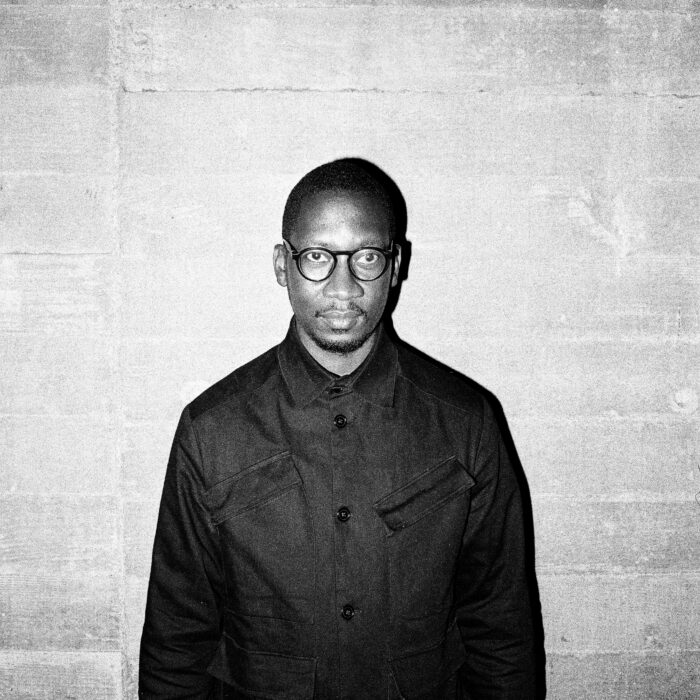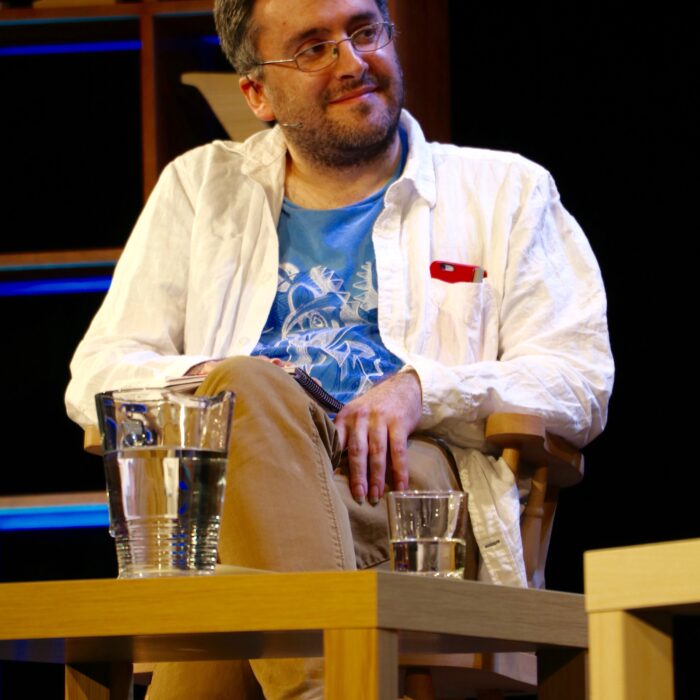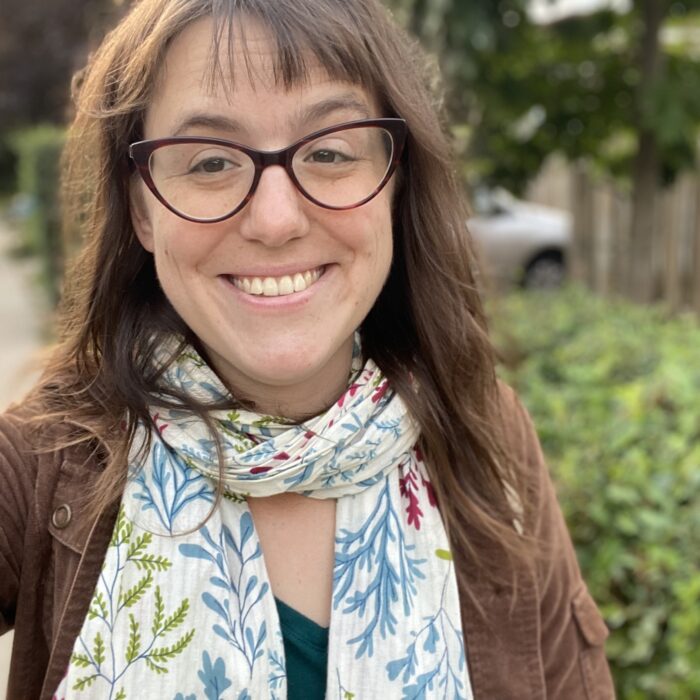You have no items in your cart. Want to get some nice things?
Go shopping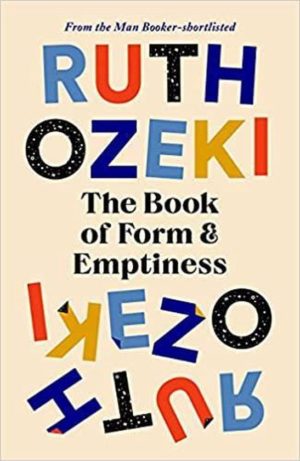
In the UK for the promotion of her latest book, author Ruth Ozeki took time out to discuss Darleks, Zen Buddhism, and the healing power of pottery with Litro Book Review Editor Jane Downs. Shortlisted for the Booker prize for her novel A Tale for the Time Being, Ruth’s latest work The Book of Form and Emptiness was published by Canongate in the UK on September 23.
Jane Downs: Hi, Ruth, and welcome to London, my hometown. How does it feel? Is it strange to be travelling again?
Ruth Ozeki: This is the first time I’ve been out of my house for about a year and a half. It’s my first trip anywhere! On the one hand, it’s strange and on the other hand, it feels completely normal. I’m having a bit of that cognitive dissonance that has characterised the last year and a half/six years. Everything changed in November of 2016, and life was no longer what it used to be. I think that’s probably true in the UK as well because that’s right around when the Brexit vote happened, right?
JD: It’s funny that you should take it back to that point, as I hadn’t really thought of that. I was thinking about the pandemic and February 2020, but you’re right. The actual shift in perspective – when it felt like we’re looking at everything slightly askew – does go back to that point.
RO: Yes. I’m sure you were inundated with the news from the States, but I mean that was… that was really tough. And it still is. It’s when we all suddenly realised something about the country, about the divisiveness in the country and everything that we thought “you know” just wasn’t any more.
JD: It’s when things that we took for granted, things that we thought just could not move, did. Everything got turned on its axle. And this comes out in your book, of course – the race riots, the election. It clearly relates to the Trump era and the seismic shift in American society that was going on at that time.
RO: That’s exactly right. I started writing this book long before any of that happened. I started writing the very early parts with Benny probably in 2012 right after I finished A Tale for the Time Being, and some of the things, a lot of the library scenes and characters like the Aleph and the Bottleman were refugees from an early draft of A Tale for the Time Being.
JD: They’re beautiful characters, so colourful and big. They work very well together. There’s a balance between the young girl and the older man who is an invalid and a great tenderness between them. The choreography is lovely.
RO: They’ve been hanging around in my mind since 2007 or 2008, looking for a home, and they found one in this book. At one point, I was trying to figure out when this book should be set, and at first I thought during the Seattle WTO protests in 1999, but then suddenly here we were, at the end of the Obama era and the elections were starting and the forest fires were starting, and I realised that the whole thing had to be extremely contemporary, and so I moved it all up.
JD: I read that the previous novel was quite long in the making and involved quite a lot of cutting and changing when the tsunami hit in Japan. Was the birth of this new novel similarly drawn out? Did you constantly have to rewrite to integrate these new events?
RO: Yes, I had to keep giving it temporal face-lifts which, of course, are never just face-lifts. Every time you change something on the surface you have to change the deep structure, too. That was a constant practise. I think that has been true in all four novels. In my first novel A Year of Meats, I was happily writing on about the meat industry and suddenly Mad Cow broke out, so I had to kind of recast the entire story differently. And the same thing was true with the second book All Over Creation, which was about genetically modified potatoes at a time when the controversy about Monsanto and terminator seeds was blowing up. So there has always been this struggle, because I really like to let the outside world into the novels, but then there’s a danger in that, too, because I can barely control my fictional world, never mind the real world!
JD: I suppose that comes with writing very contemporary novels that are set in the present day. Once you bring that in, you’re constantly having to make changes. Did the pandemic come into this new book, too, or was it pretty much finished by the time the pandemic hit?
RO: The book was pretty much finished by the time the pandemic hit, but I felt very much that, for example, Annabelle’s situation where her office is closed and she is sent home to work, that that was something that we were all experiencing: the influx of all your office paraphernalia that now is suddenly in your bedroom. Although it was a different context, it was not dissimilar. And to go back to your earlier point about bringing the world in, I’ve always felt that the novel is a kind of permeable container. Why not let the world in, why not have the novel be in dialogue with the world? I think I started thinking overtly like that when I read Kurt Vonnegut’s “canary in coal mine theory of the arts.” It says basically that when artists and writers start squawking and flapping and keeling over dead, you know that something’s wrong in the coal mine. So, it’s our responsibility, as artists and writers, to squawk and flap and keel over. It’s the most useful thing we can do for society.
JD: Well, I think that’s probably true and indeed one of the things that comes up in your book is the issue of mental health, which is also a very now topic: It was talked about during the Olympics with Simone Biles for the first time discussing the issues she was facing and Naomi Osaka during the Paris Open when she decided she couldn’t speak to the press and she ended up having to withdraw. When you came up with the character of Benny, you said that he had been in your head for a long time, but did the idea of placing mental health at the centre of your novel grow out of Benny, or did you particularly want to write about that as a topic?
RO: You know, the last book was also about mental health issues really. A Tale for the Time Being was about a young girl who was really grappling with bullying and her suicidal inclinations. More than that, she was planning on killing herself and she just had one thing that she wanted to do before she did and that was to write her great-grandmother’s life story. I always thought of it as a kind of Scheherazade tale: You’re forestalling your own death by telling stories, and, of course, Nao was sixteen and she was so obsessed with her own life that she never got around to telling her great-grandmother’s story. But the point was that she was writing against her own death, and I think that for Benny, too, it’s the same kind of thing: Nao had her diary, and with Benny it’s his book, and so once again there’s this relationship between a troubled child and the act of reading and writing and conversing with literature that ultimately saves him.
JD: I like what you said about Scheherazade, about the connection with other forms of storytelling, and I can easily imagine the novel in animation. Benny describing the table leg talking reminds me of the Sorcerer’s Apprentice and the brooms sweeping up. You worked before in visual media, as a visual artist, and I know you have said that this book began with the voices you hear in your head, but do your characters also begin as images?
RO: The images I started with were the images in Benny’s dream, when the Aleph reaches down and touches his forehead. The second image I had, though, was the image of Benny standing on the mound of garbage, which was inspired by the Walter Benjamin quote from “Theses on the Philosophy of History,” this image of being blown back into the future and seeing the accumulation of the past piling up in front of you. I had this image of Benny and the Aleph standing on this great garbage heap looking into the past and being blown backwards.
JD: It’s a very powerful image, and I’d like to come back to this word powerful as I was wondering about the power of words, because in the novel you play a little cameo role in the library, where there is an author who is typing and writing while Benny reads or sleeps. Toward the end of the novel, they have a conversation in which the author talks about books and seems to express regret about the future of libraries where stacks are emptying to be replaced by computer terminals. I wondered if you could say something about your own feelings about the future of books and the written word and perhaps the future of libraries, which I think that anybody who like books is a little bit sad about.
RO: I’m doing my best to keep the written word vital and relevant, as are all writers, but proportionally speaking, there just aren’t that many of us. And as for book-as-object, I’m not entirely pessimistic. I think that as human animals, we do have a hankering for objects, we like to hold things in our hands, and I don’t know this for sure, but I’ve been hearing that during the pandemic books sales were just fabulous and people were not just buying e-books, they were buying physical books, too, and that seemed encouraging to me. I think that as things do become more and more virtual and more and more remote, we want a book that we can hug to our chests. I think it’s very human, at least at this point. Who knows what we’ll become? Maybe we’ll be like the Daleks soon. We’ll just be these soft, meaty brains encased in garbage cans with toilet plungers sticking out of our shoulders…
JD: That’s a nice image! It’s an image for another book maybe?
RO: No, that’s Doctor Who! Those are the Daleks! They’ve already done it! But I think that while we still have hands, we want things that we can hold in them.
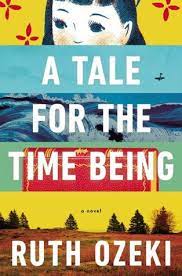
JD: You have described this novel as a cousin to A Tale for the Time Being and there are connections that anyone who’s read the previous novel will recognise. Could you say a little more about these?
RO: The initial connection was the setting of the library and the denizens of the library who were characters that existed in an early draft of A Tale for the Time Being. Then there is the Zen connection. When I was writing A Tale for the Time Being, I was very much inspired by the Dogen Zen master who is the founder of the Zen school that I follow, and I was thinking about his essay called “Being Time,” which was the philosophical koan, or question, at the heart of that novel. This novel, too, has a koan at the centre of it, which is “Do insentient beings speak the Dharma?” Do sentient beings have agency, vitality, and the ability to become enlightened, and do they have the ability to enlighten us? And then another similarity is that both books have overtly Zen characters in them. Both have Zen nuns who are there to do what Zen nuns do: to offer a kind of ballast and a different way of reflecting on the events that are happening in the book.
JD: The Zen philosophy certainly comes through, and I think that people who read your novels come away with certain elements of Zen teaching that they then carry with them. Is this something you do intentionally or is it instinctive – part of your own experience as a Buddhist priest?
RO: Ha! I think that there are some literary critics who are very suspicious of what I’m doing, who think that I have a secret, nefarious Zen agenda and that I’m using and abusing the form of the novel as a vector for infecting the world with my Zen ideas. But no. Honestly, I don’t think about readers at all when I’m writing. That’s the point of a novel. I spend eight, ten years working on this thing. It has to be for me.
JD: It is, though, one of the nice takeaways from your novel and it’s unusual to have that incorporated into fiction.
RO: There’s a long tradition within Zen Buddhism of storytelling. I mean, yes, this happens to be Western storytelling because I’m a Western person, but it fits within the Eastern tradition of commentary literature. I went to an International Dogen conference in Kyoto and somebody said this to me, and I just laughed, I thought it was funny. He’s a professor of Zen Buddhism at Kyoto university and he told me that A Tale for the Time Being is commentary literature. It’s a comment on an original teaching, and I don’t think he’s wrong. It’s different, but it does fall within that category. At the time, I thought it was hilarious as it was the last thing I intended, but then I realised: Well, sure! It’s true. Why not?
JD: One of the big pieces of the new novel is the relationship between fantasy and reality. I was thinking about the central philosophical question that Benny is asked: “What is real?” He has to decide whether the voices he is hearing are real or fantasy. Does this question perhaps reflect the experience of the novelist, existing in a space that’s in between these two places?
RO: What a great question. This goes back to one of the first things that we were talking about, to the rupture that happened in 2016. Suddenly reality and fantasy seemed to conflate. There was the breakdown between these states. We used to think of reality and fantasy as being two separate things, but then in 2016, reality and fantasy collided, and there was a commingling of the two, and what came out of that was fake news, which is dangerous and terrifying. As a novelist, too, I’m always seeing fiction colliding with reality, and I think it’s more interesting to allow the fictional container, the walls, to be porous, to be permeable and to allow reality into the fictional world. It makes me think back to when I was a young person reading Gabriel Garcia Marquez for the first time, and I was thinking about magical realism and how within a fiction there can be realist fiction and then fantastical fiction and there is also a kind of wall between them. So, what I’m trying to do in my fictional world is to allow those to kind of commingle as well, so that in what appears to be a realist novel there are moments where it breaks through into something more fantastical.
JD: There is also the suggestion in the characters of the Aleph and the Bottleman that great art and great ideas are often a bit on the edge, that they’re a little bit subversive. To what extent do you think that it’s a necessary part of creation to venture into places that are beyond the norm? To what extent is that true for you?
RO: I think that’s absolutely right. That’s our responsibility. I think the Bottleman actually says this, that it’s the responsibility of the artist to disrupt the status quo. If he doesn’t say it, then he should! I feel very strongly that it’s the artist’s job to break the rules, to question, to disrupt the status quo and to make things strange.
JD: Do you have any other characters in your head or that you maybe didn’t use? Do you think that you might have a cousin or sibling that might grow out of this book?
RO: I don’t think anybody got left out of this novel. Everybody who wanted to be in it was in it. I’m not sure exactly what I’m doing next. One thing that I do want to do is take some time to read. When I’m working on a novel like this, an eight-year process, I tend to read a lot of books that have to do with the fictional world that I’m trying to create. So, I read an enormous number of psychology books, books about lived experience of people who hear voices…a lot of Walter Benjamin…a lot about hoarding and clutter-clearing, I was reading Marie Kondo and about Japanese animism. In Japanese culture, the indigenous religion of Shinto is an animistic religion, so a lot of what Marie Kondo is proposing are historical Japanese ideas, that when you have something that’s precious and you have something that’s served you well over the years and then it breaks, maybe you take a moment to feel gratitude before you throw it out. You don’t just chuck it. So, I was reading a lot about animate objects, and there’s a whole genre of stories about mischievous animate objects in the Japanese tales. I completely dropped out of contemporary fiction, so I have about eight years of novels to catch up on!
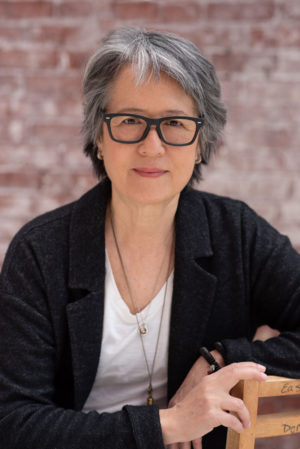
JD: Before we finish, I do have one last question: In both in A Tale for the Time Being and this new book, your central character is an adolescent. Is there anything in that for you specifically? Was it a time of your own life that you particularly wanted to explore?
RO: Yes, very much so. It was a very intense time of my life. I was a very troubled adolescent. Nao is a suicidal teenage girl and I was a suicidal teenage girl. Benny finds himself committed to a locked psychiatric ward and that was an experience that I also shared. I have survived for 65 years, and after all that time, one becomes reflective. You think back on the moments in your life where you really changed in some kind of way, and for me that was certainly adolescence. I think that’s why I was drawn to write about those periods. I wonder what I’ll write about next. I’m not sure. There’s something about the relationship between old people and young people that I think is compelling. Young people can be so radical, but I think old people can also be radical. It’s the intermediate generation who become kind of conservative and fearful. In your middle-age, there’s a lot at stake. Maybe you’re raising children, and you’ve got elderly parents and you’ve got mortgages and you’ve got jobs and you’re still on the ambition ladder and so you become necessarily conservative during that period. But when you’re old it’s like “Whatever!” You don’t have much left to lose. And when you’re young you think you’re invincible, you think that bad things will never happen to you, so there’s a kind of convergence that happens. You see this in families, sometimes, where the grandparents and grandchild have a kind of bonding that excludes the parent. I love that. It’s that’s a fascinating dynamic. I can imagine writing about that.
JD: Do you think that this goes back to the relationship that you had with your own grandfather? That there was some sort of bond? Does it maybe stem from that?
RO: Yes. He had died by the time I went to Japan, at the age of seven, but I grew up with his things. His collections of things, his paintings, his Zen prayer beads, rocks that he had polished when he was interred during World War II in Santa Fe in the desert. All of these things that belonged to him, they were very precious to me. They were magical.
JD: I love the idea of objects as the conveyers of memory.
RO: Yes. These were powerful, powerful totemic objects. So even though I had only met him once, when I was three, the transmission was pretty intense.
JD: Initially, I thought that your novel talks about the power of words, but I discovered that it also talks about the power of objects. I’m a potter, and I like to think about the afterlife of objects, about them going out into the world, with their own life and their own history, their own history of handling with every little chip and bump.
RO: Exactly! I also make pots.
JD: You do? You’re a potter!? It’s such a wonderful thing. It’s very calming. It’s about centring the self and getting balance. Do you use a wheel?
RO: Yes, I do. I don’t have my own wheel. I used to go to a studio in the town where I live, but then when the pandemic broke out, I had to stop, so I haven’t thrown for about a year.
JD: Maybe you’ll have time now to read and make pots?
RO: That’s exactly what I want to do!
JD: Perhaps one day you’ll write something that connects ceramic objects with your writing?
RO: I was thinking about that. It’s such a powerful practise, I really would like to write something about it. I started doing pottery in England. There was on Baker Street – or just off Baker street – there was a pottery studio called Briglin Pottery. Brigitte Appleby was the founder – I think she was influenced by Bernard Leach. When I was a high school student, I took a year after high school and came to England and lived in Richmond and worked at Brigitte’s studio as a decorator. The potters there who were doing production taught me how to throw. I was 17 or 18, I guess, and it was wonderful. There was a huge gap, a gap of decades between when I first started and when I was able to pick it up again, but it’s like riding a bicycle, you don’t forget. I would love to do it again. I would love to take a little break from the world of words and return to the world of objects!
About Jane Downs
Having grown up in the south of England, Jane went on to study Arabic at university, travelling extensively in the Middle East and North Africa before putting down roots in Paris. Her work includes short stories, poetry, reportage and radio drama. Her audio drama "Battle Cries" was produced by the Wireless Theatre Company in 2013. Her short stories and articles have been published by Pen and Brush and Minerva Rising in the US. In August 2021 she joined the Litro team as Book Review Editor, commissioning reviews of fiction translated into English. Other works can be found on her website:https://scribblatorium.wordpress.com

